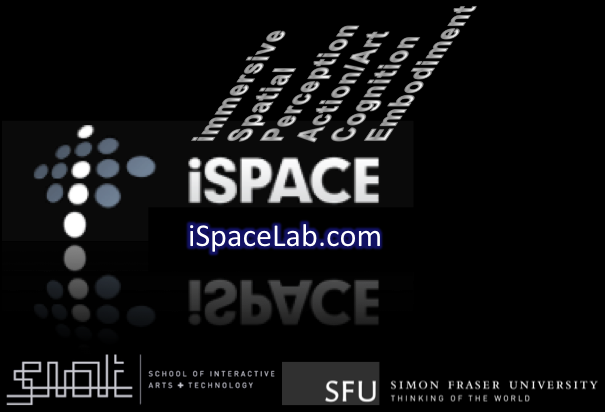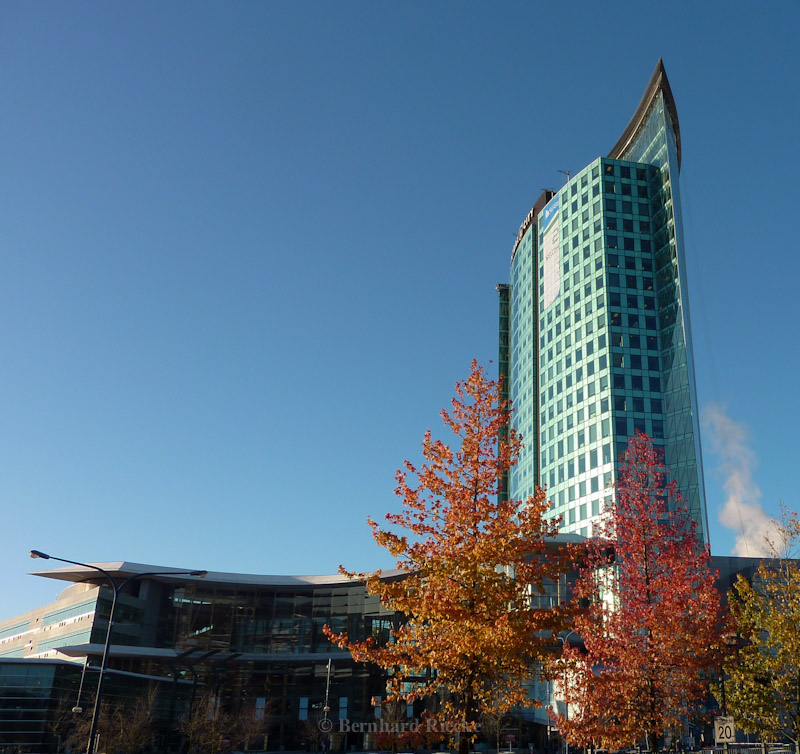Interested in joining the iSpace team?
 Interested in contributing to innovative research at the intersection of Virtual Reality/XR, Psychology/Cognitive Science, Informatics, Human Factors/HCI, AI, and Art/Design in an interdisciplinary team?
Interested in contributing to innovative research at the intersection of Virtual Reality/XR, Psychology/Cognitive Science, Informatics, Human Factors/HCI, AI, and Art/Design in an interdisciplinary team?
I’m always looking for bright and motivated PhD and MSc students (and pof course postdocs) to join the iSpace Lab at the School of Interactive Arts & Technology (SIAT), Simon Fraser University in the greater Vancouver region in beautiful British Columbia on the west coast of Canada, where the Pacific Ocean meets the Coastal Mountain range. Greater Vancouver is one of the most ethnically diverse areas in Canada and consistently ranks among the world’s most livable cities in the world based on quality of life —especially if you love the outdoors (skiing, hiking, water sports, Yoga, beach volleyball…).
Expectations & potential projects
Applicants should be highly motivated and have a strong interest in interdisciplinary scientific research aligned with the iSpace Lab’s vision (see Vision) and our Projects). Our overarching goal is designing and investigating emerging media like Virtual Reality/XR for positive impact on individuals and society. A short overview appears in my TEDx talk “Could Virtual Reality make us more human?” (technology improved since then, but the vision and opportunities/challenges remained).
In particular, I am looking for student to work in one of the following areas (some grant-supported / some grants are currently under review/planning):
Designing and investigating intuitive interfaces for embodied flying in VR & teleoperation:
Design & evaluate user-powered motion cueing interfaces to enable more natural and intuitive locomotion through and spatial orientation in VR, for both ground-based navigation and especially for **full 3D navigation (**both virtual flying and tele-presence/tele-operation applications like drones). One of the aims is to create an empowering embodied and seamless flying experiences, similar to and inspired by~lucid dreaming~, as well improving user experience, usability, and performance while minimizing motion sickness. Why this matters: Moving naturally—on the ground and in the air—unlocks embodiment, presence/immersion, performance, and accessibility without heavy hardware.
- Leaning-based control for ground and flying (hands-free, “HeadJoystick”-style): Leaning-based ground locomotion, Embodied & Intuitive Flying.
- Hybrid large-space travel with HyperJump to reduce cybersickness (merge continuous motion with fast jumps to preserve comfort/orientation): HyperJump (seamless travel), HyperJump Flying.
- Concurrent locomotion + interaction (move and act fluidly): Lightsaber task.
- Telepresence/tele-operation applications (drones, robots): Telepresence.
Tackling Cybersickness - one of the key issues preventing VR/XR from reaching its full potential:
Investigate ways to better assess/ understand / mitigate/reduce cybersickness in VR/XR (and immersive tele-presence and teleoperation (incl. first-person view drones), and develop a toolbox for better assessing and reducing cybersickness. Related prior projects include our work on HyperJuming (merging continuous and teleporting into one seamless interface, for ground-based locomotion as well as embodied flying) as well as designing more embodied and intuitive VR locomotion interfaces that also helped to reduce motion sickness, for both ground-based locomotion and flying, and interfaces allowing for concurrent locomotion and interaction in VR.
VR comfort & interpretable design models
Why this matters: Comfort is the everyday bottleneck; designers need actionable levers and shared language, not just tips.
- Synthesis & guidance: see our expert-sourced work Beyond the Screen: Combating Cybersickness and the Cybersickness course.
- Community knowledge-building:ISMAR 2024 Cybersickness Tutorial and the NoMoSick’24 standardization workshop.
- Design checklists & talks: curated from the above and integrated into ongoing projects.
Measuring & mitigating cybersickness (benchmarking & tooling)
Why this matters: Without fair and repeatable measures, we can’t compare mitigations or generalize across labs, content, and users.
- VR Sickness Benchmark (controlled, gamified induction + recovery with synchronized measures): Benchmark System.
- Surveys & community input:Cybersickness Survey.
- Method/tool releases & tutorials: see also
Designing and investigating Virtual Reality experiences towards enhancing health and wellbeing:
We are exploring how therapeutic exercises can be implemented within a VR intervention to generate insight towards VR as a ‘positive technology’ for individuals with chronic illness. We are modifying our existing VR environment used in related recent studies to explore how integration of therapeutic exercises may enhance subjective and psychological wellbeing. Additionally, we will add features of interactivity such as biosensors and sensor-driven machine learning/procedural generation of visuals towards enhancing the personalization, emotion elicitation, and immersion of the VR intervention. We will integrate the lens of individuals who will be the users of the VR intervention, with their participation and input central to the exploratory research process. Practical outcomes will be the development of an interdisciplinary framework for design of the VR intervention and resulting pilot VR intervention will be evaluated for early indicators of feasibility within targeted end users. This project provides a unique opportunity for interdisciplinary collaboration and knowledge translation between human-computer interaction, clinical practice, and health sciences.
VR4Good/XR4Good:
More generally, how we can bring together immersive virtual reality/XR with artistic/creative practices and emerging technologies such as AI and bio/neurosensing to provide users with profound and meaningful experiences that have a positive impact (on humans, society and/or our planet)?
While we’re always open to a variety of projects, we’re also specifically looking for students to specifically join our SSHRC-funded project on “Empowering Emerging Adults through Compassion and Enhanced Social Connection: Co-creating a Compassionate Connection Oasis VR Toolkit (ccOasisVR Toolkit) and a new project on leveraging VR/XR and AI for exposure therapy for PTSD treatment.
Why this matters: Thoughtfully designed VR can support calm, connection, agency, compassion, reflection and more — benefits that matter beyond entertainment. Examples include:
- Meditative & breath-centred experiences: BRieFLY, Breath of Light, Sensorium.
- Awe, self-transcendence & nature connection: Awedyssey, Virtual Earthgazing, SIRIUS—Earthgazing in isolation, self-transcendent VR experiences, awe-inspiring wellness environment (AWE).
- Prosocial connection & compassion: ccOasisVR Toolkit, Being in Virtual Worlds, Echoes of Me, Design for Genuine Connection.
- Bio-responsive & creative XR: JeL, LucidLoop, Synedelica, Body Remixer, Virtual Transcendent Dream, StarStuff.
Other related prior projects include our work on Design Strategies for Genuine Connection, Virtual Earthgazing to tap into and better investigate the benefits of the Overview effect and other awe-inspiring and self-transcendent VR experiences, and immersive experiences/installations such as Virtual Transcendent Dream,JeL, LucidLoop, Body Remixer, StarStuff, Synedelica, Breath of Light, etc.
Gamified research (researchified games)
Why this matters: Gameful tasks boost engagement and ecological validity while preserving experimental control.
- Representative: Gamified Research.
Spatial cognition & vection (foundations)
Why this matters: Understanding self-motion perception, spatial updating, and multisensory cues grounds everything above.
- Reviews & paradigms: Multisensory contributions to vection, Embodied Self-Motion Illusions (Vection), Lean & Elegant Motion Cueing, Transition into VR.
- Applied examples: HeadJoystick, HyperJump, Concurrent locomotion & interaction.
And more - see our Projects page
note that we often put ongoing research online only once we have a first publication/exhibit.
Do you fit in?
As the iSpace Lab works at the intersection of Informatics, Psychology/Cognitive Science, HCI/Interaction Design/UX, AI, and VR/XR, you should bring a strong background in at least one of these and be excited to expand into the others. We value programming/computational literacy (Unity/OpenXR; sometimes Vizard/CityEngine), clever experimental design & statistics (JMP/SPSS/Python/R; see IAT 802), clear writing/presentation, and proactivity + teamwork. Technical “maker” skills and VR hardware experience are a plus. See theses I supervise—we favour the cumulative thesis model (paper-based) so you get to share your work, get connected, and gradually build up your thesis early on instead of having to write a huge monograph at the end. Working in an interdisciplinary team can have it’s own challenges, but it is also incredibly rewarding, especially for people with high proactivity, enthusiasm & perseverance, and good communication and team/interpersonal skills — and a good sense of humour.
Funding
Students: Funding typically combines teaching assistantships, scholarships/fellowships, and research assistantships; students often present at suitable venues, with travel support when possible.
Postdocs: No fully funded positions at the moment, but I’d be happy to support strong applicants in applying for external fellowships (e.g. Canada Postdoctoral Research Award (CPRA) program ($70,000/year), see also SFU’s postDoc funding opportunities page) and provide limited bridging support where feasible.
How to apply
Email me ( ) with subject: Prospective [MSc/PhD/Postdoc] — [Your Name] — [Project Area/interest]
) with subject: Prospective [MSc/PhD/Postdoc] — [Your Name] — [Project Area/interest]
Please include:
- CV (with publications, if any) and links (e.g., GitHub, linkedIn, online portfolio, videos/demos/talks, google scholar page).
- please indicate if you have Canadian citizenship or permanent residency as that’s useful to know — it opens up more opportunities for scholarships/funding.
- your research interests and how they fit into our lab and relate to the above research areas or prior/ongoing projects (you do not need a concrete research proposal — it’s typically best developed together)
- Unofficial transcripts and any other relevant materials.
Briefly indicate your programming/VR/stats background and any scholarly writing experience. Positions are competitive; January is the typical deadline for a September start, but outstanding off-cycle candidates may be considered. Our lab values the diversity of its community and is committed to fostering an inclusive environment for all members. We welcome applications from all qualified individuals, regardless of race, color, religion, sex, sexual orientation, gender identity, national origin, age, or disability. We believe that a diverse and transdisciplinary team enriches our research and enhances creativity and innovation. We are dedicated to providing equal opportunities and ensuring that our selection process is fair and unbiased. Join us in our mission to push the boundaries of knowledge in a supportive and inclusive environment.
I’d be happy to arrange a Zoom interview if there seems to be a good fit. Review of materials is ongoing until positions are filled. I look forward to your application!
Bernhard
Prospective grad students: Admission decisions are made by SIAT’s Graduate Admission Committee and SFU’s Dean of Graduate Studies. You must satisfy SIAT/SFU requirements. Please check SIAT grad admissions and contact me before submitting your application. Off-cycle admissions are possible for excellent candidates. Please mention my name in your SIAT application.
If you have already research ideas when applying, great! If not, and you are just really excited about contributing to our research agenda and vision (and are capable in doing so), that also fine, and we should discuss ideas before you write your “letter of intent” to make sure it will be a good mutual match. In either case, please check the iSpace research agenda and vision and our recent projects and publications and talks/demos in our YouTube Channel) to get a better idea of our research scope and approaches (although I’m always interested in expanding into new exciting research areas).
What is SIAT & SFU?
Check out the SIAT website or SIAT’s YouTube channel.
Simon Fraser University (SFU) ranks among the top universities in Canada. Our lab is part of SIAT, a vibrant, interdisciplinary school with research in HCI, interaction design, media arts, and more. We are at SFU Surrey (directly on the SkyTrain line) in Metro Vancouver—ocean, mountains, art, diverse food, coffee, and of course hockey.
Conferences we like to attend and publish in
(See the publications page for details, below are just a few examples)
Contact Info
School of Interactive Arts + Technology (SIAT)
Simon Fraser University Surrey
250 –13450 102 Avenue Surrey, BC V3T 0A3 CANADA
iSpace Lab (aka Alternate Realities Lab): SUR 3800 & 3850 (3rd floor)
my office: SUR 2770 (2nd floor)
Campus Guide & Maps & SIAT Contacts/Infos & SIAT directions
Directions by Skytrain: take the expo line direction King George, exit at Surrey Central, walk across the parking lot to the tall office tower (with the SFU sign above the Blenz), take the wide stairs/escalator up to the Mezzanine (=2nd) floor.
Take a right for my office (2770) which is in the SIAT corridor, or walk up to the 3rd floor and take a right for the iSpace lab (room 3800/3850).
Note that the elevator won’t let you exit on the 2nd or 3rd floor.
phone: we don’t have office phones any more, so just text/message/email

Map and Directions (large map)
Google Street Map View